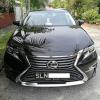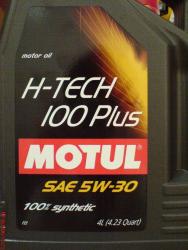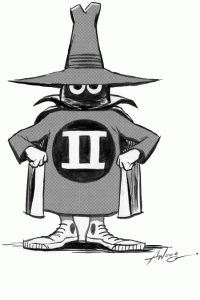Search the Community
Showing results for tags 'Tech'.
-
Hi All, Was at the mall yesterday and I saw something close to an Iphone. I took a closer look at it and actually realize there is this brand "Nothing Phone" I looks very much the same and it has more designs put into it and it actually so much cheaper. Come today, I check it out. Actually it is founded by co-founder of One Plus and it really looks good. If there is already a thread on this. Mod, please help to merge. But if not, I just want to know more about this new thingy and will it replace the Apple Iphones or even take up a big market shares from here?
-
https://www.straitstimes.com/world/united-states/facebook-google-absorb-us-lawmakers-jabs-in-rare-big-tech-hearing The America politicians like to destroy the world econony. Anything trump don't like stanchions, use law to charge them. Look at trump use stanchions on China.. Now use law on Big tech companies. America is basically telling the world and their own countries to shift all their businesses overseas and don't want to do business with the world. Can anyone imagine one day Facebook or Google said, enough is enough.. We are going to shift HQ to other countries. It will be gg for America.
-
Seat has named their supermini offering after the renowned holiday destination hoping to capture some of that youthful and carefree spirit, and for the most part, I dare say they have been largely successful. For those thinking that the new Honda Jazz looks a little too cutsey for their taste, the Seat Ibiza rightly should be more than the next alternative in the practical small hatchback segment. It packs a 355 litre boot, and the rear seats provide plenty of knee room even for someone of my height. Sharp lines and an appealing angular design, coupled with a beautiful font for both the central infotainment and the driver's instrument cluster round off the supermini package. And speaking of packages, this Ibiza I tested was a top-spec (locally at least) Style Plus model, meaning it now gets additional tech features including adaptive cruise control, tiredness recognition, and keyless access. Yare yare. All you really need to know is that this is a $92,999 (as of 31 October 2019) car that packs a 1.0-litre turbocharged three-cylinder delivering 114bhp and 200Nm. For context, that's practically as much torque as you get in the larger 1.4-litre Volkswagen Golf. And boy does that seven-speed DSG make use of that torque. Day-to-day driving will see the dual-clutch shifting gears at the earliest opportunity, meaning that you get a fuel consumption of 14.7km/L, which is nice, but flog the pedal and the car switches instantly out of siesta mode, sending you away. The three-cylinder's thrummy noises switch into something addictively snarly, and being in something so small makes that zero to 100km/h figure of 9.5 seconds feel conservative. Readers of my stuff elsewhere will know I was an absolute fan of the old Audi A1, but this car just feels so much more nimble. The light but communicative steering makes it feel like you can chuck it into corners with near reckless abandon, and the car swallows directional changes with much aplomb, but the new MQB A0 platform also adds to the Ibiza's suite far greater highway sovereignty. Sound insulation feels like a class above and the car suffers none of that nervousness other cars in the segment can be prone to at high speeds. Just how exactly has Seat managed to make the Ibiza feel so chuck-able in the twisites yet so mature at the straights is genuinely astounding, especially when you consider that this car makes do with only a semi-rigid rear suspension. So there has to be some catch right? Well, unfortunately, yes. The Volkswagen Group's brand positioning becomes apparent when you knock on the door cards, which sound definitively hollow, and that DSG I mentioned earlier can be over eager to switch into the taller gears when doing gentle cruises, leading to some uncouth vibrations transmitting into the cabin. Shoppers looking for a mature, grown-up supermini ought rightly to look at the Volkswagen Polo or the Skoda Scala. But who really gives a toss about little niggles like that. The Ibiza is bleedingly fun to drive and (I suspect) own. Adaptive cruise control and tiredness recognition in a car this fun? Obviously someone out there hasn't been taking their pills. Just like Mike Posner on his holiday trips, why not choose to do something fun once a while? Make this car your trip. Live life on the fun side. Opt for horsepower just once. Buy this. Now, where's my Valium? ----------------------------------------------- Click here for the full review on sgCarMart! -----------------------------------------------
-
TECH STARTUP DEVELOPS APP THAT CAN TRANSLATE WINE LABELS https://www.thedrinksbusiness.com/2019/07/tech-startup-develops-app-that-can-translate-wine-labels/ Australian startup Third Aurora is developing an app that uses AI-powered technology to enable users to translate wine labels written in different languages. The app will form part of the company’s larger web-based wine platform called Winetales, which is currently being trialled by 80 wineries around the world. Co-founder of Third Aurora, Dave Chaffey, said that the text on wine labels can be translated into the desired language, and when viewed using the app, appears on the label in the same font. The app is capable of translating over one hundred different languages using both artificial intelligence and augmented reality to achieve the finished result. Chaffey added: “Artificial intelligence reads and interprets the content and augmented reality projects the new text back onto the label, right in front of you. “Self-translating is a bit of a misnomer. The labels aren’t actually changing, the translation is projected using augmented reality, which is powered by your smartphone. “If you’re a wine lover it’s a handy addition to have in your front pocket. This sort of technology will reach a tipping point very quickly – we think it will be towards the end of 2020.” Trials began on the Winetales platform on 2 July 2019, with an early release expected from 23 September. The aim is to roll out the platform in 2020. The platform uses AI-powered label recognition technology and allows wineries to add and edit content attached to each wine. The data can also be shared via social media. Third Aurora was established in January this year by three entrepreneurs – Matt Hallber, Luke Chaffey and Dave Chaffey – who specialise in augmented reality, code and digital strategy. The startup is not the only company using AI and AR in drinks. In May, Swedish distillery Mackmyra teamed up with Finnish technology consultancy Fourkind and US electronics giant Microsoft to create what it claims is the first whisky “developed with artificial intelligence”. Last year, creative design agency Freytag Anderson partnered with 3D visualisation specialist Render Studio to develop technology that will enable users to view animated can designs in real-time using a mobile application. In 2017, online wine retailer Sipp launched an app which uses augmented reality to pair wine with food while chef Jason Atherton’s City Social in London developed a cocktail menu called Mirage which involved the creation of 12 different cocktails, which ‘come to life’ when viewed through a specially designed app.
- 3 replies
-
- 1
-

-
- app
- wine label
-
(and 2 more)
Tagged with:
-
Girls vs. Boys: Brain Differences Might Explain Tech Behaviors By Julie Jargon https://www.wsj.com/articles/girls-vs-boys-brain-differences-might-explain-tech-behaviors-11569317402?shareToken=stf11a3d13d7ef4c92a3a25ed4a6e2867e&mod=djmc_pkt_evgrn Recent research shows the brain’s rewards regions activate when males crave videogames, girls face more depression when overusing social media Many parents of both boys and girls have witnessed striking differences in the way their kids use technology, with their sons generally gravitating to videogames and their daughters often spending more of their screen time scrolling through social media. Emerging research indicates that brain differences between males and females help account for the split. “It is entirely plausible from a neurological perspective that there’s an underlying biological component to this difference people are seeing,” said Larry Cahill, a professor of neurobiology and behavior at the University of California, Irvine, who has spent two decades researching gender differences in the brain. In this column I’ve chronicled the aggression some boys exhibit when they have to shut off videogames and transition to other activities, as well as the problems some young men face when they go to college and have to juggle game time and school work without mom and dad’s help. That led some readers to question why girls don’t appear to be having these problems. Of course, girls have issues of their own, such as smuggling “burner” phones to keep up with forbidden social media accounts. It’s just that when it comes to videogames, most girls seem to have a better handle on when to stop. According to a 2017 survey conducted by Pew Research Center, 41% of teenage boys said they spend too much time playing videogames while only 11% of girls said they do. Marc Potenza, a psychiatry professor at Yale University, teamed up with researchers at universities in China to find out why. Using functional MRIs, which measure brain activity by detecting changes in blood flow, the team studied neural responses in young male and female gamers, particularly in the parts of the brain associated with reward processing and craving—a motivating factor in addiction. When the men and women were shown photos of people playing videogames, those parts of the men’s brains showed higher levels of activation than those parts of the women’s brains. Brain regions that have been implicated in drug-addiction studies also were shown to be more highly activated in the men after gaming. The researchers said the results suggest men could be more biologically prone than women to developing internet gaming disorder. But girls and women aren’t free from problems when it comes to digital media. Data from Pew shows that, in general, women use social platforms such as Facebook, Instagram and Pinterest far more than men. Many girls and women are drawn to those photo-sharing sites because they like to form bonds and find similarities, says Rosanna Guadagno, a social psychologist at Stanford University. Even if women only use those sites more than men because that is where their friends are, many experts and parents say they have found that girls appear to have a greater fear of missing out, which compels them to keep up with what their friends are posting. Some recent studies show that girls feel the ill effects of too much social media use, such as depression and anxiety, more than boys do. Liz Repking, a cyber safety expert and mother of three in suburban Chicago, has seen the differences in her own sons and daughter. Earlier this summer, her 15-year-old daughter said her phone was driving her crazy. She told her that she felt pressured to follow her friends’ Instagram stories and like and comment on their posts, and that it was eating up a lot of her time, Ms. Repking said. Her sons, 18 and 21, use social media—Snapchat, in particular—mostly to communicate with friends but don’t feel compelled to keep up with what people are posting. “There’s more peer pressure and validation I see with it for her than for the boys,” she said. In August, Ms. Repking’s daughter decided to impose some limits, such as being on her phone no more than three hours a day and checking Instagram less frequently. “When I asked her a week later how that was going, she said, ‘I’m only looking at Instagram three times a day but I can’t catch up,’” Ms. Repking said. One might argue that multiplayer videogames are the way boys connect with friends online. But it’s different. “Videogames can be social but there’s also a physical distance because you don’t see photos, and communication is largely through text, which is more consistent with the direct way men tend to communicate with each other,” Dr. Guadagno said. Researchers at the University of Zurich looked at how differences in brain functioning can help explain why women tend to be more prosocial—that is, helpful, generous and cooperative—than men. In the 2017 study, they hypothesized that the areas of women’s brains related to reward processing are more active when they share rewards and that those areas in men are more active when receiving selfish rewards. Brain scans conducted on men and women, in which they chose between receiving a monetary reward only for themselves or one that involved sharing money with others, supported their theory. The Lego Group learned a lot about the prosocial nature of girls more than a decade ago when it conducted research on who buys the brick building kits. At the time, about 90% of the Lego sets purchased in the U.S. were intended for boys. That led the company to conduct more research with girls which revealed, among other things, that girls wanted more role-playing opportunities. Lego created a pastel-colored line called Friends, which sold well but was criticized by some consumer groups—including the Campaign for a Commercial-Free Childhood—for reinforcing gender stereotypes. Academics who study gender differences also have faced backlash for pointing out that boys and girls aren’t the same. “It’s not a debate that there are sex influences throughout the mammalian brain,” said Dr. Cahill. “How they all play out is what we should responsibly explore.” Scientists say understanding those differences is critical to parents’ ability to help kids navigate the fast-changing world of tech. Our brains haven’t caught up to modern times, says Dr. Guadagno, which is why kids’ digital behavior can feel so confusing and overwhelming to parents trying to manage it. “Human brains are wired for survival on the savanna,” she said. “They’re not wired for social media and videogames.” Write to Julie Jargon at [email protected] PHOTO: STEVEN SALERNO
-
https://www.straitstimes.com/tech/pilot-scheme-to-facilitate-hiring-of-foreign-talent-in-tech-firms?utm_medium=Social&utm_campaign=STFB&utm_source=Facebook#Echobox=1564531412
- 156 replies
-
- 10
-

-
- foreigners
- tech
-
(and 6 more)
Tagged with:
-
I chanced upon this site and they have some TECH stuff that can save some money. Sharing w the guys here or even ladies also. cheers! https://www.techconnect.com/article/3144990/hardware/cyber-monday-deals-tech-bargains-that-truly-save-serious-money.html?idg_eid=b74b6b2f5e851201e29510e8b251bede&email_SHA1_lc=&cid=tcon_nlt_techconnect_daily_2017-12-05
-
https://www.youtube.com/watch?v=HQtIlxe_ZkY RoBoHoN
-
So its another year of gadget galore from CES. Lots of exciting tech this year... and a lot of it involving cars as well. Off the top of my head; Toyota announces that it will offer its about 6000 patents on fuel cell technology and stations for free use by any manufacturer. This is to drive the adoption of the technology. Very similar to what Tesla did for its Li-ion battery and Supercharger station tech. Audi had its experiemental A7 remote drive car all the way from Cali to Las Vegas. Pretty cool that a car can handle the highway by itself without any driver input Merc showed off a a crazy futuristic saloon car that's larger than the S-class. Looks straight out of the future with its Lancia like looks and those doors without a B-pillar nVidia showed off its new Tegra chip and a sample UI for cars. Damn nice. Though their maps demo failed a bit I'm pretty excited about the stuff Sony has shown. Damn fine looking 4K TVs and those smooth lights which have integrated speakers in them Oh... and Olloclips 4-1 lens kit for iPhone 6/6+. The 10x and 15x macro lenses look awesome. The fish eye and wide lense not so much. 100 bucks on the Apple Store.... tempted to buy
-
High tech machines unable to stop Low tech ingenious....... Yahoo news: Philippine thieves use jackfruit sap to rob cash machines Philippine thieves have been using low-tech sticky tree sap to rob high-tech cash dispenser machines in banks, police said Tuesday. Jackfruit sap is daubed on a metal bar that thieves insert into the card slot of automated teller machines, said a suburban Manila police spokesman Inspector Edwin Malabanan. Whenever a person tried to withdraw cash, the bills would stick onto the bar inside the machine, which thieves would retrieve once the the disappointed customer had left. "The sap is really sticky. It was really clever of them to think of it," Malabanan told AFP. Customers of several banks complaining of losses prompted the police to look into the matter and one of two thieves was arrested last week thanks to closed circuit TV footage of a bank ATM, he said. Police do not know how many other thieves have used this method, he added. Malabanan said police charged the suspect under a law punishing tampering of electronic devices for theft, but it was thrown out since he had used a non-electronic tool. The suspect will now be charged with simple theft which carries a lesser penalty of up to six years in prison instead of up to 20 years in jail under the electronic devices law. link: https://sg.news.yahoo.com/philippine-thieves-jackfruit-sap-rob-cash-machines-095737740.html
-
While both petrol and diesel engines are essentially reciprocating-piston, internal combustion machines, the fuels in question aren’t interchangeable because there is a fundamental difference in the way the combustion is initiated. For this reason, the two engine types are designed and constructed differently. Both, however, have powered automobiles, in one form or another, for over a century. During much of those 100-odd years, diesel was always the poorer cousin of petrol – being the preferred propellent for trucks, buses, taxis and locomotives. Diesel fuel was much cheaper than petrol, too, while diesel-fuelled engines were noisy, smoky and slow, earning them a decidedly working-class reputation. Well, the world is no longer the same, and technology has changed for the better. SAME STROKES, DIFFERENT STOKES Like a typical petrol engine, a diesel engine follows the 4-stroke principle of reciprocating pistons – intake, compression, ignition, exhaust. As such, the crankshaft, pistons, valves, camshaft and injectors are all present. Conspicuously absent, however, is the spark plug, because in a diesel engine, ignition to initiate combustion occurs when the fuel is injected into highly compressed air. This is why it is also called a compression-ignition (CI) engine. The air-fuel mixture in a petrol (or spark-ignition) engine is maintained at a fixed ratio (roughly 14:1 by mass). It is this mixture that’s ignited by the spark plug near the end of the piston’s compression stroke. In a diesel engine, however, only air is compressed inside the cylinder, but to a pressure four times higher, achieved by the high compression ratio. What results is a chamber containing air pressurised to about 80 bar (80 times the atmospheric pressure around us) and with a temperature of at least 700 deg C, both of which are conditions ideal for diesel fuel to self-ignite without the need for a spark. And this is exactly what happens when the high pressure (which creates that familiar diesel clatter). There is no throttle on the intake manifold, and power delivery is solely a function of fuel quantity injected. ALL TORQUE, ALL ACTION The biggest revelation to motorists who only “know” petrol would be the modern turbo-diesel car’s astonishing mid-range acceleration. Terrific torque at low-to- medium engine revs is the secret here, and it makes city driving surprisingly shiok. Even the most highly tuned diesel engines rarely rev past 5000rpm, with the vast majority of today’s diesel passenger cars developing their maximum energy at around 4000rpm. But with massive amounts of torque appearing very early in the engine speed range, a good turbo-diesel car doesn’t need to rev high. It’s very efficient, too, by internal combustion standards. High compression, usually more than 15:1, plays a key role in this. With turbocharging, the increased effective compression ratio in a diesel engine leads to even greater expansion of gases in the combustion chamber. In other words, more work is done, and since Newton-metre (Nm) is the measure of said work, the rotating crankshaft ultimately develops more torque thanks to the turbo (or turbos, if the engine is equipped with more than one). While the specific power output is limited by a diesel plant’s relatively low engine speeds, a typical 2-litre turbodiesel’s peak torque output easily matches or betters that of a turbo petrol 2-litre. For instance, Mercedes’ 3-litre turbo-diesel V6 generates 619Nm, which compares favourably to the 618Nm produced by the automaker’s 6.2-litre AMG V8! ALWAYS WORKING HARD All that work done by the turbo-diesel means the hardware has to be able to cope. High compression, high pressures, high temperatures and “spontaneous” ignition require a reinforced engine block, stronger valvetrains and a more robust cylinder head. The reliability and durability of diesel is also “helped” by its history of “heavy duty” use in commercial vehicles. Today, the diesel clatter continues to be heard from compression-ignition engines, but “behind” the unsophisticated noise is advanced technology such as turbocharging, ultra-high pressure injection (1700-2000 bar), high-precision fuel metering, catalytic converters, soot filters and computer controlled engine management. These devices and systems have made the modern diesel engine powerful, economical and, believe it or not, even desirable. This article was written by Shreejit Changaroth, freelance writer for Torque.
-
9 Top Tech Myths Debunked Does more bars really mean better mobile service? Are ones really gone forever once you empty the trash? PopMech tackles some of the most frustrating falsehoods of the digital age Jailbreaking and Rooting are Illegal Smartphone owners can jailbreak their iOS devices and root their Android phones to get around the restrictions of manufacturers and carriers. But is this ominous-sounding practice legal? The word itself—jailbreaking—makes it sound like the process is illegal. In actuality, it's more complicated: The technique both is and isn't illegal under U.S. copyright law. Last fall, when the Library of Congress updated the rules for 2013 through late 2015, it decided that you can legally jailbreak your smartphone (though you'll void your Apple warranty) but not necessarily your tablet, because, the Library says, "tablets" is an ill-defined category. What is definitely not legal is unlocking your phone. The Library's ruling prohibits tinkering with your device so it works on different cellular networks without your wireless carrier's permission, which is subject to as much as $2500 in fines, or even jail time. Legal questions aside, is jailbreaking worth the trouble? Nearly 7 million iOS users who cracked their devices using the latest jailbreak since it became available in February say yes. And as for the riskiness of jailbreaking an iPad, just consider: Despite the law, absolutely no one has (yet) been prosecuted or fined. More Bars Equals Better Mobile Service If your phone has five bars, you'll get the best wireless service performance, right? Well, no. Those bars indicate your signal strength to the nearest cellular tower, but if many other people are also connected to that tower, you can still experience dropped calls and poor speed due to the congestion caused by networks' limited capacities. For instance, it might take about a square block of people in Manhattan to overload a single cell tower, whereas in Wyoming, it would take a population spread over 15 square miles. And even if you capture some of that service, speed varies by network provider. According to wireless-coverage mapper RootMetrics, AT&T has the fastest LTE data network, followed by Verizon and then Sprint. LED and LCD are Different Screen Technologies This is more of a technicality, but "LED" screen is a bit of a misnomer. It is not a new kind of display, as some retailers might assert, but rather a type of LCD television. The only difference between a so-called LED TV and a regular LCD TV is the type of backlighting: Though both rely on LEDs to form the picture, LED displays also use light-emitting diodes (LEDs) to illuminate the display, whereas non-LED sets use fluorescent backlights. So which is better? That depends. LED-backlit LCDs come in two configurations: Some have a full array of LEDs behind the LCD, others have LEDs just on the edges. Edge-lit TVs tend to be thinner, while full LED-backlit screens can do tricks such as "local dimming" to increase contrast in dark sections of an image. Regardless, all LED sets have two distinct advantages over conventional fluorescent LCDs and plasmas: They are more energy-efficient, and they last longer. If you plan to keep your set for a while, go with LED. It Doesn't Matter if You Keep Your Laptop Always Plugged In Speaking of life spans, you might also have come across advice saying that if you have a lithium-ion battery in your laptop, you don't ever have to completely drain it the way you needed to with older nickel-metal-hydride laptop batteries. This is false if you want to get the most out of your battery. For one thing, if your plugged-in laptop gets hot while you use it and the battery is charged fully, all you're doing is exposing the battery to heat, which will make it age more quickly. Besides heat, the other extreme that shortens Li-ion battery life is high voltage—like the high voltage maintained by a charger—after the battery is full. Keep the battery just below a full charge by keeping it active, and when you do charge it for a long time, do it when the computer is off to avoid blasting it with extra heat. You need to be careful about charging only if your computer doesn't include battery-management software, as many made by Lenovo, Sony, and Samsung do. For computers that don't automatically optimize charging, the advice on how often to charge and discharge their batteries varies. Apple recommends getting battery juices flowing by using the computer unplugged from time to time—though not too many times, since Li-ion batteries have limited charge cycles (each cycle is from complete charge to complete discharge). No matter what, though, Li-ion batteries will eventually lose capacity; expect to get about two to three years of good charges. Macs Don't Get Viruses In the raging Mac-versus-PC debate you'll usually find at least one Apple loyalist claiming Macs are immune to viruses. Apple itself has contributed to this myth (remember that "I'm a Mac" ad in which the poor PC guy gets sick with a virus while Mac is unconcerned?), but after the Flashback virus crisis last summer, which affected around 250,000 Macs, Apple quietly changed its "virus-free" sales pitch on its Mac page from "It doesn't get PC viruses" to "It helps keep you safe." It's a subtle but significant change. While it's true PCs get more viruses and malware than Macs, that's mostly because attackers target the more widely used Windows operating system. Now that Apple computers are growing rapidly in market share, however, Mac users may need to be more cautious. So, do you need an antivirus program for OS X? Probably, though don't assume it will keep you entirely safe. No antivirus program will catch 100 percent of all viruses, and some antivirus software can cripple your system's performance. The first and foremost defense against malware is safe browsing habits. Still, unobtrusive software such as the free Sophos Anti-Virus for Mac Home Edition can give you peace of mind by protecting your not-so-invincible system. The More megapixels a Camera Has, the Better the Pictures New 18-megapixel cameras might make your 6-megapixel seem obsolete, but the emphasis on megapixels in the camera world reflects marketing spin as much as technological superiority. It's true that more megapixels means more detail in larger photos. That detail, though, depends not just on pixel count but also on the camera's sensor: The larger it is, the more light data it can pick up, and the more detailed your images will be. If you add megapixels without increasing the overall size of the sensor, you reduce the amount of light reaching each pixel. Your point-and-shoot camera may have 20 megapixels, but if its sensor is the size of a pinhead, your photos won't look so great. According to camera reviewer and self-proclaimed "Forrest Gump of photography" Ken Rockwell, "10 megapixels is more than enough for anything," and even just 6 will probably be good enough (most new cameras tend to come with at least 12). The goal, Rockwell says, is a sharp photo, not tons of pixels. To Get the Best HD Experience, You Need Expensive Cables You can spend $3 on an HDMI cable, or you can spend $2000. But when it comes to these cables, the you-get-what-you-pay-for maxim doesn't apply. Premium-cable manufacturers would have you believe gold-plated connectors and "high-density triple-layer metal-to-metal shielding" give you a better signal and, therefore, the ultimate picture and audio performance. But generic—and cheaper—cables will deliver the same picture and audio quality. Signal over an HDMI cable is digital; it either comes through or it doesn't. There are, however, some cases in which spending more is a good idea. For example, if you need a very long cable (more than 6 feet), skip the cheapest ones, since poorly made cables are more likely to impede the signal at longer distances. For the record, unless you don't care at all where your money goes, no one should spend two grand on a cable. Emptying the Trash or Recycle Bin Permanently Deletes Files It would make sense that deleting a file would actually delete it. But when you empty the Recycle Bin (Windows) or Trash (Mac), the data aren't erased, only the links to the complete files are. A computer told to delete a file won't actually remove it but will instead deallocate the space it takes up on the hard drive, opening that space up to be written again. That means bits of information still remain, and any snooping hacker could piece them together to rebuild what you thought was gone forever. To truly and permanently delete files, you have to instruct your computer to go a step beyond emptying the Trash or Recycle Bin. On a Mac, choose "secure empty Trash"; on a PC, you have to work in the command-line interface of Sdelete, a free program that allows you to totally wipe either all free space or only specific files. There is an upside: If you accidentally delete something and must get it back, in theory, you can. Private/Incognito Browsing Protects Your Privacy Here's one last downer. The "private browsing" feature of your browser isn't as private as it suggests. The setting tells your browser not to do its usual job of saving information about which pages you've visited or about what you've typed into forms. It does not, however, keep you anonymous. Websites, ad trackers, and your ISP can still record your visits, and files you download will still remain on your computer or mobile device. Even worse, a 2010 study by Stanford University found that some browser add-ons store information about your browsing even while in private mode. If you're wondering what you can do to stay anonymous online, you'll need to use a proxy server, such as Tor, so you appear to be somewhere and someone else as you surf, or a VPN, which can secure and encrypt your information. Also, get in the habit of clearing your browser's cookies cache and history every week or so.
-
Seven midsize vehicles earned the top rating in a new insurance industry test of high-tech safety features designed to prevent front-end collisions. The Cadillac ATS and SRX, Subaru Legacy and Outback, Mercedes C-Class and Volvo S60 and XC60 won "superior" ratings in tests by the Insurance Institute for Highway Safety. The institute tested 74 midsize cars and SUVs from the model years 2013 and 2014. Those equipped with front collision-warning and automatic braking systems generally scored better. The systems can either warn the driver or automatically stop the car if they sense a potential collision. The institute IIHS, a nonprofit research group funded by insurance companies, has pushed federal regulators and automakers to require or offer as an option new safety systems such as antilock brakes. The group also is pushing automakers to bolster front-end crash resistance. Automakers have been offering the frontal-crash systems on more and more models as the price of the technology falls. The systems use radar, cameras, ultrasonic sensors and computers to spot objects in front of cars and determine if a collision is possible. A driver may be warned to take action, or the system may apply the brakes itself. The IIHS said its data institute has determined that the devices help drivers avoid frontal crashes, but even so, auto insurance companies generally aren't offering discounts for people who buy them. Insurance companies say that as the systems become more popular in certain models, insurance claims will decline. Those models eventually will see discounted rates. In the tests, six other cars got second-best "advanced" ratings, while 25 received "basic" ratings. Another 36 got no rating because they didn't have the systems or their systems didn't meet the institute's standards. The institute says the tests will help people decide which features to buy and encourage automakers to adopt the new technology faster. Source: http://www.straitstimes.com/breaking-news/...y-test-20130927
-
Hello, any one from MCF heard of this grade of oil from Motul... its H-TECH 100 5w30 100% synthetic engine oil... apparently, my mechanic mentioned its so new that even the motul website has not been able to update on its corresponding webpages.. except for those found in Japan.... A check with the specfications... SM grade leh. anyway, i just did my 10k servicing.. wah the engine is very very quiet now.. smooth and like very eager to rev... and accelerate... thinking about the previous FC i could get, think it will only get better.... Gurus, genie47, trex and all others.. please feel free to comment... would like to hear from everyone... http://motul-asiapacific.com/product_line_.../4stroke18.html This is from motul asia pacific website.. its not updated yet for this new oil... attached are the photos and the bronchure which i got from my mechanic.... enjoy brothers... before this.. i never really heard of motul oil one.. call me a mountain tortise [inline DSC00750.JPG] [inline DSC00751.JPG]
-
Where is the best place to shop for IT/tech gadgets in penang? Any places similar to Sim Lim?
-
http://www.todayonline.com/World/EDC091008...r-from-the-dead New opportunity?!
-
From CNA: http://www.channelnewsasia.com/stories/sin...1236698/1/.html SAF uses technology to counter lower birth rate & ageing population By Imelda Saad | Posted: 12 November 2012 1429 hrs SINGAPORE: The Singapore Armed Forces (SAF) has been affected by Singapore's declining birth rates and ageing population. National Service (NS) enlistees are drawn from eligible male Singapore citizens and permanent residents. In a reply to Parliament, Defence Minister Ng Eng Hen said in the 1990s, about 15,000 NS men were enlisted into the SAF each year. From the year 2000, Singapore experienced higher numbers as children given birth by cohorts of baby-boomers came of enlistment age, including those born in the 1988 Dragon year. As a result, SAF enlistments increased and reached a peak of about 21,000 in 2011. But going forward, due to an ageing population and declining fertility trends, SAF enlistments are expected to gradually taper and revert to levels in the 1990s, of about 15,000 each year. But even with these enlistment numbers, Dr Ng said Singapore's long-term projections till 2040 indicate that the SAF will still be able to mobilise about 300,000 soldiers from regulars, full time national servicemen (NSFs) and operationally ready NS men (ORNS), if needed. Dr Ng added the SAF has taken into account its manpower requirements over the long term through its transformation towards a 3rd-generation SAF. That is, through advances in technology and with more effective systems and platforms, which require fewer men to operate. Dr Ng said: "Beyond investing in technologically advanced platforms, we also leverage technology to network our platforms together to provide us greater synergy in training and operations. "So one example is the recently inaugurated community for command, control, communications, computers, and intelligence. Another important factor driving up the overall capability and productivity of the SAF lies in the rising quality of our servicemen." "As a whole, the higher quality of our NS men combined with the advanced platforms and effective use of technology to network our systems, will ensure that the SAF continues to be an effective military force and a strong deterrent against any aggression," he added. - CNA/xq
-
just bought from autobacs. any idea if i can use this for wax application instead of just polish as well? did a google search but found no results on using it for wax instead of polish. http://www.autoglym.com/ensg/product-prodd...KMG&Range=3 thanks
-
As per topic, anyone knows where does techneat car care in caltex macpherson move to? i went there last week and found the entire station is closed. thanks.
-
BMW is illuminating the future as the company has announced two new lighting technologies. First up, the Dynamic Light Spot system uses an infrared sensor to detect any animals or pedestrians that are 100 meters (328 feet) in front of the vehicle. When something is found, a beam of light is focused on the object to alert the driver. BMW has also developed glare-free high beam assistant. Details are limited, but the company says the system uses a camera to detect oncoming traffic and then "masks" the headlights to prevent glare. BMW didn't say when to expect GFHBA, but indicated the DLS system will be offered as part of the Night Vision package. Source: BMW
- 7 replies
-
- illuminates
- future
-
(and 3 more)
Tagged with:
-
just now i took a citycab sonata taxi home the taxi driver is damn pro sia!! his cab is equipped with chargers for Nokia, Samsung, HTC mobile phones. got free laptop and wifi to use also. he also has a hot water flask, coffee, milo and tea in his cab. he even installed a electronic scrolling sign displaying "Welcome to internet taxi" beside the rear view mirror! very good service! wonder if anyone of u here has taken this taxi or not.... the driver is a malay btw













1copy.thumb.jpg.8d9fb898c1bdc8ee48be52e4aa2ad81b.jpg)










